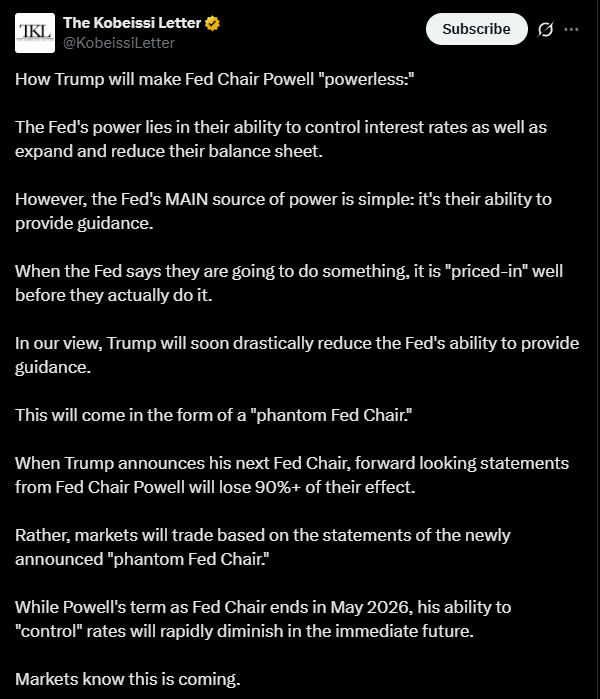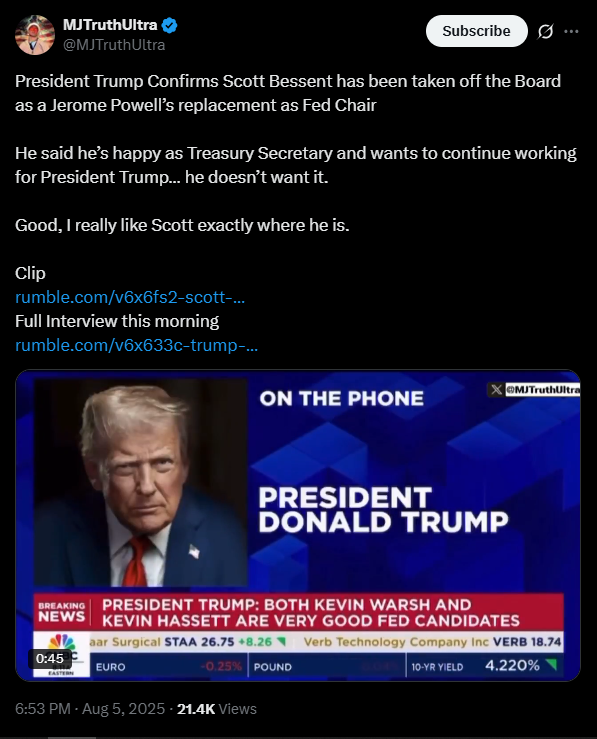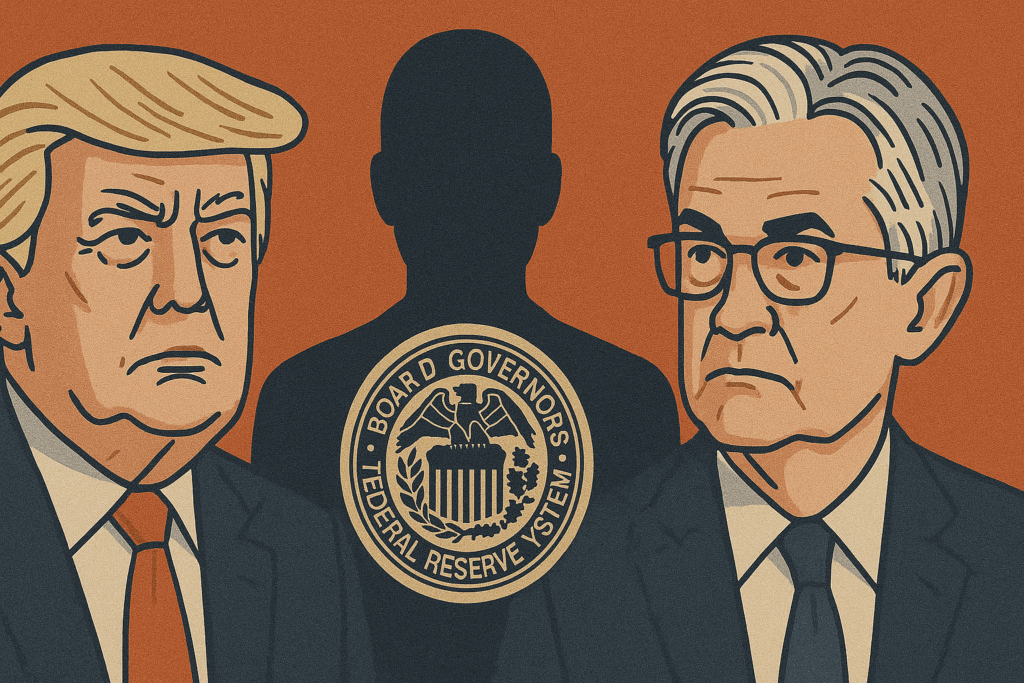Key Insights
- Trump has recently expanded his Fed chair search from three finalists to around ten candidates.
- This change in strategy could lead to Trump appointing a “phantom Fed Chair.” This Chair will undercut Jerome Powell before his term ends next year.
- Markets focus more on the incoming chair’s guidance months in advance.
Donald Trump’s search for the next Federal Reserve Chair has taken a surprising turn lately. According to administration officials, instead of sticking with the initial three finalists, Trump’s list has grown to about ten names.
However, the exciting part of this isn’t the longer candidate list. It’s the idea of a “phantom Fed Chair”. The concept of the Letter was recently discussed by the Kobeissi Letter in a recent X post.
This indicates that the US president could announce his choice for the next Fed Chair far ahead of schedule. And the goal would be to reduce the current chair’s influence over the markets before their term ends.
How the Fed Wields Its Power
Remember that the Federal Reserve’s authority doesn’t come only from setting interest rates or managing its balance sheet. Instead, its most potent tool is forward guidance.
Think of forward guidance as the ability to shape the market expectations through public statements. In simpler terms, the markets react immediately when Fed Chair Jerome Powell hints at a rate change months in advance.
Investors “price in” these expectations, even before policy changes happen. This kind of power to influence the market from mere comments gives the Fed so much influence, even without acting.
The Mechanics of a “Phantom Fed Chair”
According to the Kobeissi letter, Trump could be planning a “phantom chair” strategy. For context, the US president could publicly name his pick for Fed Chair, even before the current chair’s term ends.
If this happens, markets would likely focus more on the incoming chair’s views. This shift could occur even though Powell’s term is expected to last until next May.

While Powell is still Fed chair, his speeches and guidance could lose over 90% of their effect. Traders would instead nitpick at every comment, interview, and public appearance.
They would compare Powell’s views to the designated nominee’s and likely follow the latter’s guidance. Powell would still officially hold the role.
However, the incoming chair would become the de facto voice of monetary policy in the eyes of the market.
Expanded Search for the Next Fed Chair
Trump’s initial shortlist included National Economic Council director Kevin Hassett, Fed governor Christopher Waller, and former Fed governor Kevin Warsh. However, the expanded list now features former St. Louis Fed president James Bullard and veteran economic consultant Marc Sumerlin.
Treasury Secretary Scott Bessent is currently in charge of the search. This means he will meet each candidate, narrow the list,t and present Trump with the top picks. Trump will then personally interview the finalists before making his decision.

Bessent’s role is interesting because Trump once considered him for the position. However, Bessent opted to remain at Treasury. “I love Scott, but he wants to stay where he is,” Trump told CNBC earlier this week.
Who’s on the List and Their Backgrounds
James Bullard is the first on the list. Bullard was the former president of the St. Louis Fed and is now dean of Purdue University’s business school. He previously recommended Waller for a Fed board seat and has said he would take the chair job if offered.
Next is Marc Sumerlin, the former deputy director of the National Economic Council under George W. Bush. Christopher Waller, the Current Fed governor who impressed Bessent in an interview, is another candidate. However, some insiders doubt he will be chosen.
Kevin Warsh, the former Fed governor and long-time contender in past Fed chair discussions, is another pick, alongside Kevin Hassett, an economic adviser and former NEC director.
If Trump names his pick well before Powell’s term ends, markets could quickly become very volatile. Traders would have to reconcile the current Fed’s official stance with the likely direction under new leadership.
This change could also raise issues about the independence of the Federal Reserve. Critics argue that publicly sidelining Powell months before his departure politicises monetary policy and undermines the Fed’s credibility.

